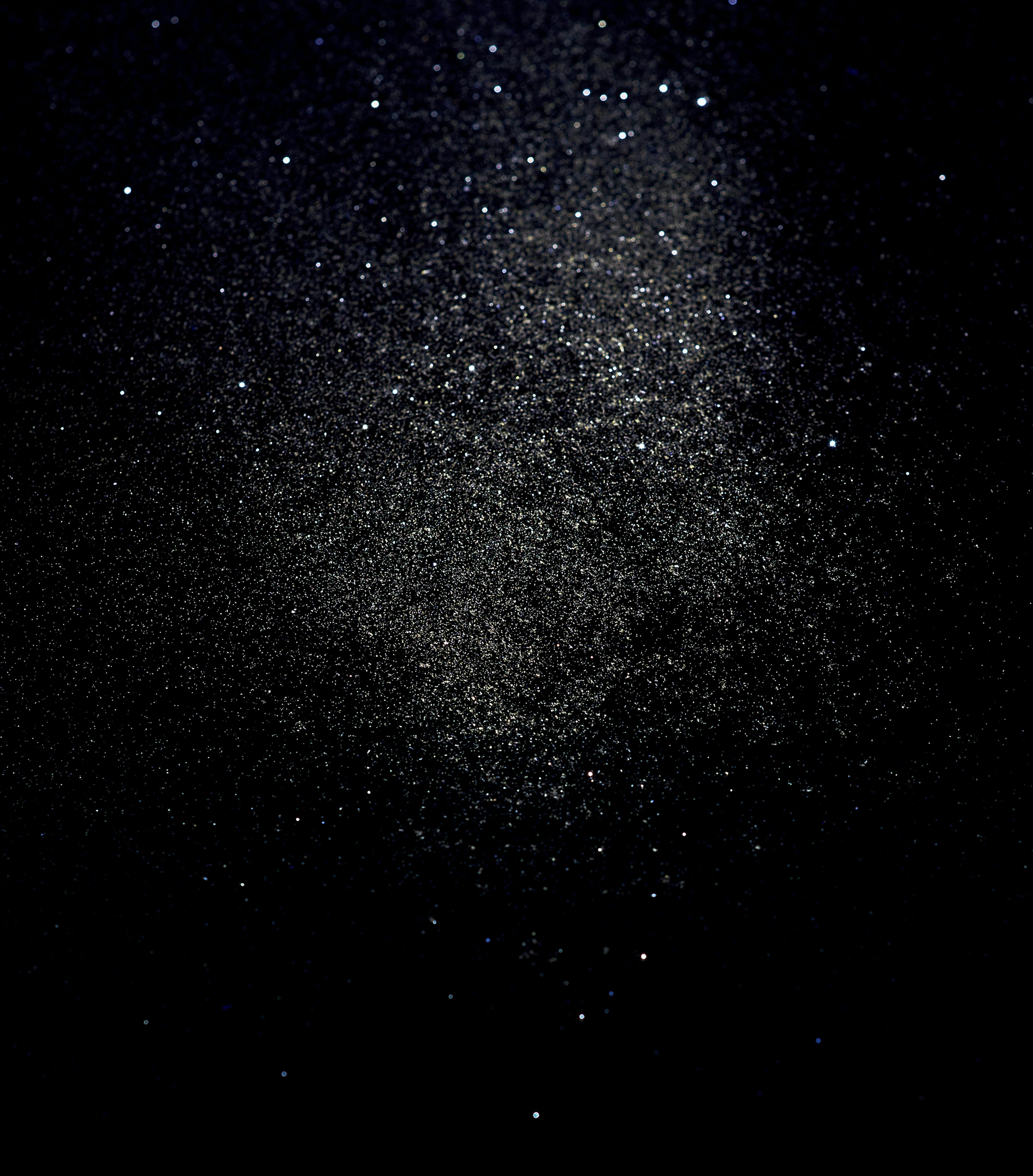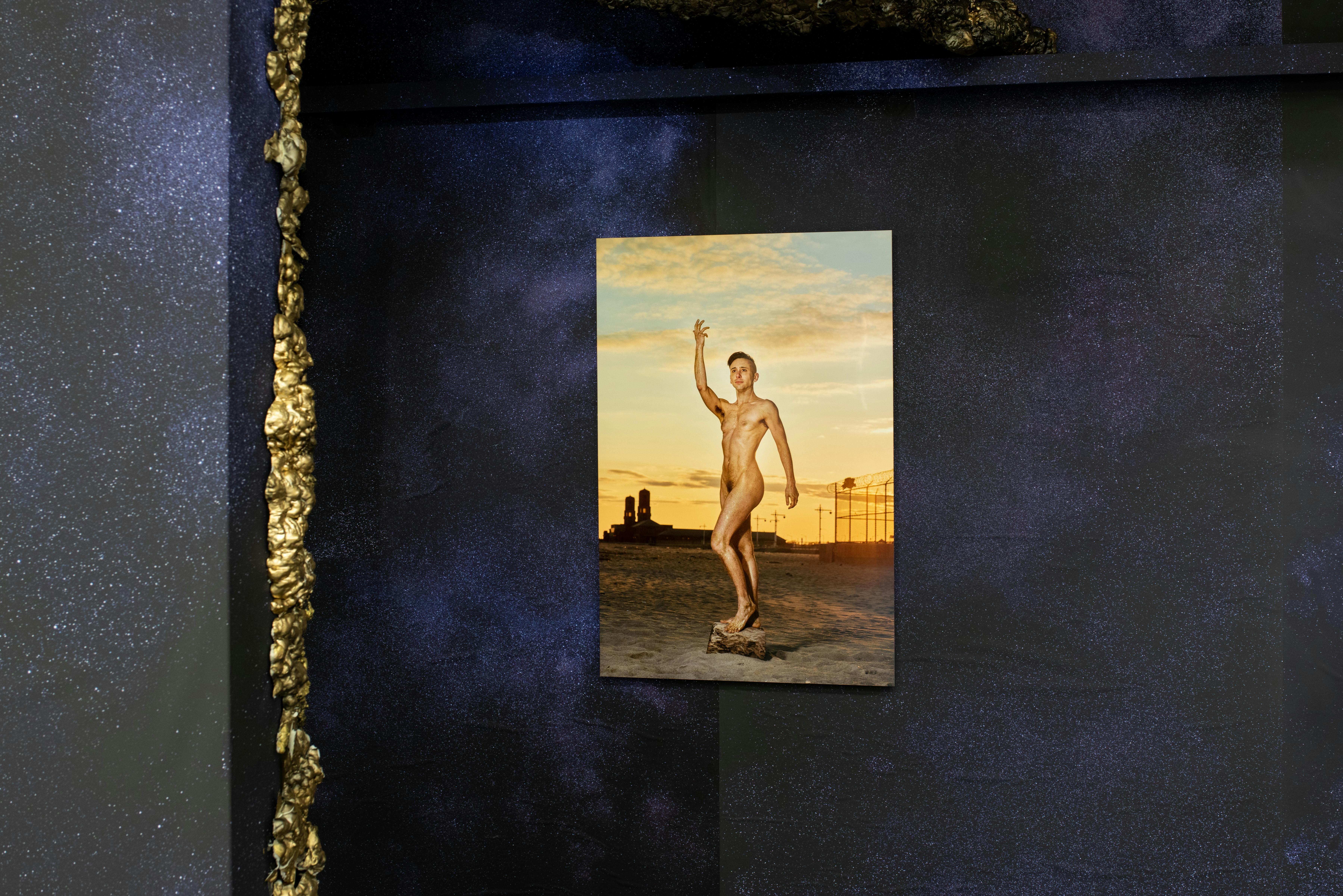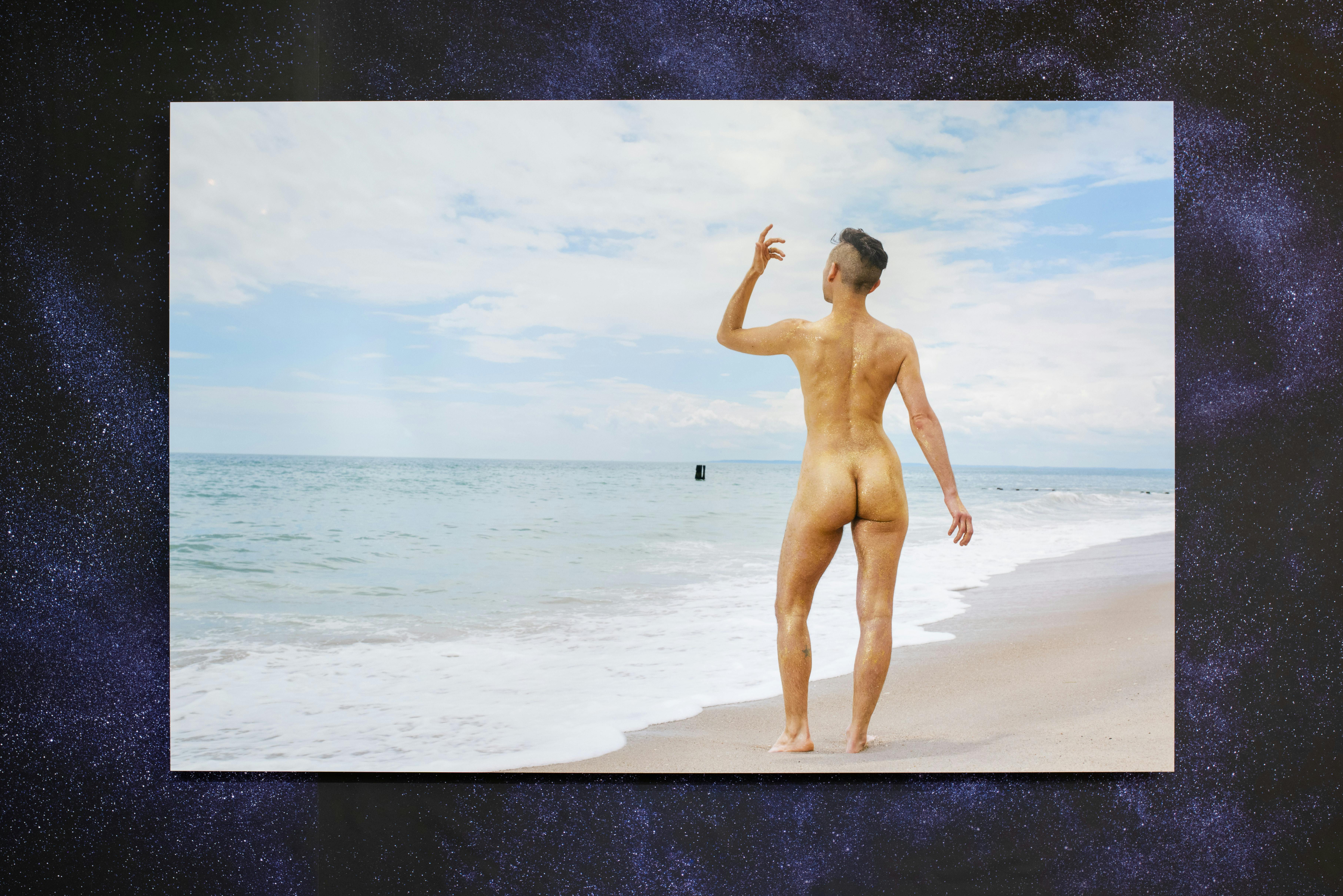Please join us at SPRING/BREAK for a shimmering solo exhibition by Lorenzo Triburgo and Sarah Van Dyck, curated and produced by SoMad's directors, Carla Maldonado, Sara Arno and Serichai Traipoom.
Shimmer Shimmer speaks to the way artists and queers in NYC engage with the renaissance, as described as the theme of Naked Lunch, that is perpetually in motion in this city – the radical philosophies and movements that emerge in the face of inordinate disparities.
In 2019 trans*queer artist Lorenzo Triburgo stopped taking testosterone after 10 years of “transgender hormone therapy” as a performative exploration of their body as a site of literal and metaphorical gender abolition. Their body and its metamorphosis towards gender ambiguity became source material for Shimmer Shimmer, an ongoing series of figurative and nonrepresentational photographs created in collaboration with their (queer-femme) partner Sarah Van Dyck. The figurative images feature Triburgo’s glitter-adorned nude form in familiar art historical poses, photographed on location at the People’s Beach at Jacob Riis Park in Queens, New York (Riis Beach)—an anti-assimilationist space, a communal center for liberation in a queer history of displacement in NYC). These images are accompanied by photographs of glitter as “constellations.”
In ceasing testosterone Triburgo reworks concepts of the body (and the self) by de-pathologizing trans*queer embodiment. Their collaboration with Van Dyck cleverly pushes against the confines of self-portraiture, and disrupts the capitalist, patriarchal narrative of the sole artistic genius or “master” – a notion that is perhaps exemplified best in the figures we associate with the Italian Renaissance.
The shimmer of glitter on Triburgo’s figure conjures queerness through camp and the political importance of queer joy, but glitter in Shimmer Shimmer is also used to suggest a mythical, celestial presence and hint at a connection to queering astrology. Portrayals and myths of Greco-Roman gods and goddesses inform the visual framing of the images, but glitter, camp, and Triburgo’s trans*queer body itself, rework these gendered interpretations and shift the viewer towards a trans*queer, astrological interpretation. When we recognize their visual references to familiar, art historical representations, such as in Venus, the glitter on both the figure and as “constellations” work to signal a connection to queer astrology, an important mode of spiritual connection for Triburgo, Van Dyck and their queer community. The still lifes of glitter as “constellations” are titled as astrological aspects such as Opposition and Conjunction to reiterate this connection. In this way, the viewer will be reminded that the title Mars, for example, could be (and is) referencing the planet, not the (gendered) god.
In Mars, Triburgo’s figure is backed by the iconic, boarded-up sanatorium surrounded by barbed-wire fence that has come to symbolize the anti-assimilationist queer space that is Riis Beach. Triburgo’s trans*queer body stands strong in an implied forward motion while one arm reaches back and subtle highlights along their fingertips imply strength and hope for the future.
The remnants of a wall knocked down by Hurricane Sandy in October 2012 that used to separate Riis Beach from the neighboring houses still presents a psychological barrier that operationally segregates the queer beach from the developed residential area to the east. The segregation mirrors the segregation found in the larger NYC area. Hostility and policing - both social and carceral - flow from the residential side of the beach to the queer side, exemplifying tensions that exist elsewhere. Shimmer Shimmer reminds us that the queer section of Riis Beach is specifically anti-assimilationist—it is a political space, it is queer. The broken glass and barbed wire allow gender abolitionist queers to remain unbothered—they/we are there precisely because those who occupy dominant identities do not want to be there.
There is also a strength in numbers that this ¼ mile stretch of beach provides and it speaks to the importance of spaces that allow us to commune. Triburgo and Van Dyck began Shimmer Shimmer in January 2020 and the importance of place and space for artists and queer communities was brought into stark relief when COVID hit in March and (amidst unspeakable atrocities and tragedies) artists and other underrecognized cultural producers had to leave the city due to loss of income and no rent relief. This time period, when our city suffered immense loss of human life to capitalist interests prioritized over human lives, specifically the lives of those deemed disposable, speaks to the “Napoleonic despotism” of the Enlightenment, the Jim Crow laws in the south that influenced the Harlem Renaissance, and the Machiavellian principles that guided Italy in the time of Michelangelo. In light of the theme of Naked Lunch, it makes perfect sense that Triburgo and Van Dyck drew upon the paintings and sculptures in the Uffizi and Boboli Gardens for their gestural and compositional decisions.
As of 2022, the buildings that back the queer section of Riis Beach are slated to be demolished and this area of the beach will be shutdown for the construction of a parking lot. Despite the impending displacement from a space that Shimmer Shimmer preemptively pays homage to, these photographs of a trans*queer figure shimmering with glitter, taking up metaphorical and literal space, evoke a sense of hope and resilience.

























